Gigabyte R281-G30 Hardware Overview
We wanted to show off the front of the Gigabyte R281-G30 in a stack with another Gigabyte platform, the Cavium ThunderX2 version on the server. The Gigabyte R281-G30 is a 2U server with 24x 2.5″ hot-swap bays up front. You can see the Gigabyte R281-G30 we are reviewing today with 24x SAS3/ SATA bays and the Cavium ThunderX2 box on top with 20x SAS/ SATA and 4x NVMe. Gigabyte has a customizable backplane that allows different configurations in the chassis.
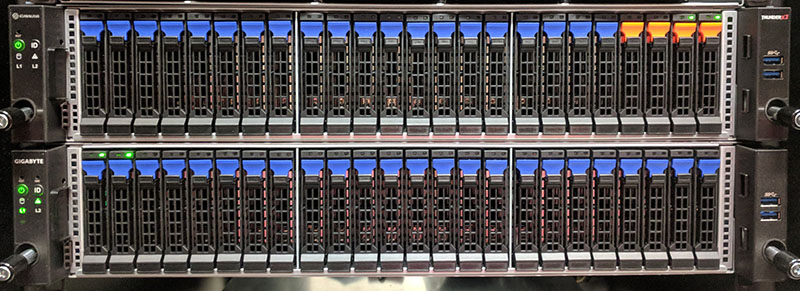
The Gigabyte R281-G30 is on the bottom of this picture. You can see the dual 25GbE NIC in this configuration although we did not have the replacement backplate for the OCP mezzanine slot, we wanted to show this view since it also has the Cavium ThunderX2 Sabre system that is based on the same Gigabyte 2U chassis as the R281-G30. It shows potential configuration options such as rear dual 2.5″ bays. It also shows the difference between mezzanine card configurations and power supplies.

Here is the stock photo of the chassis rear for comparison:

The Gigabyte R281-G30 server has dual 2kW power supplies. This is important since the 2U chassis can be loaded with three GPUs, two CPUs, 24 DIMMs, 24x SAS3 SSDs and a number of add-in cards. These 2kW power supplies essentially require the system to be on 208V or higher PDUs with C19 plugs. Each can handle more power than a standard North American household 15A 120V circuit can provide.
Here is an interior picture of the Gigabyte R281-G30. You can see that it is laid out in a fairly standard manner. The top left has the chassis SAS expander followed by the fan partition, CPUs and RAM then the expansion and I/O.
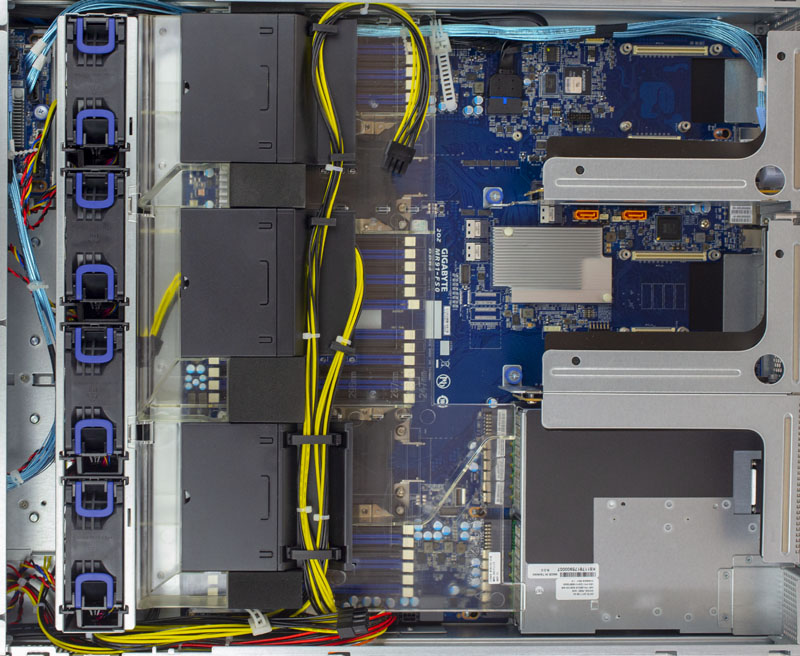
Pulling away the air shroud one can see the motherboard used is the Gigabyte MR91-FS0. This is a bedrock Intel Xeon Scalable dual-socket platform for Gigabyte used in several of the company’s servers.
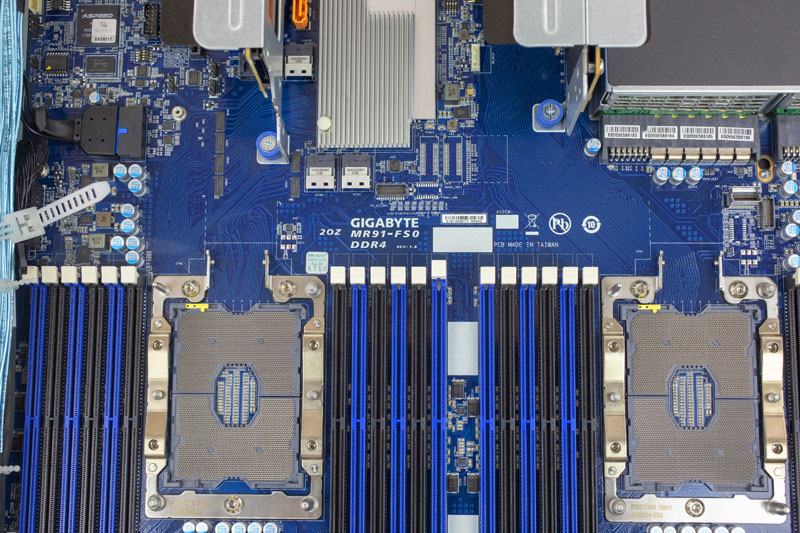
The system itself supports dual Intel Xeon Scalable CPUs, including those with Omni-Path fabric integrated. That is important as we saw that Intel Skylake Omni-Path Fabric Does Not Work on Every Server and Motherboard.
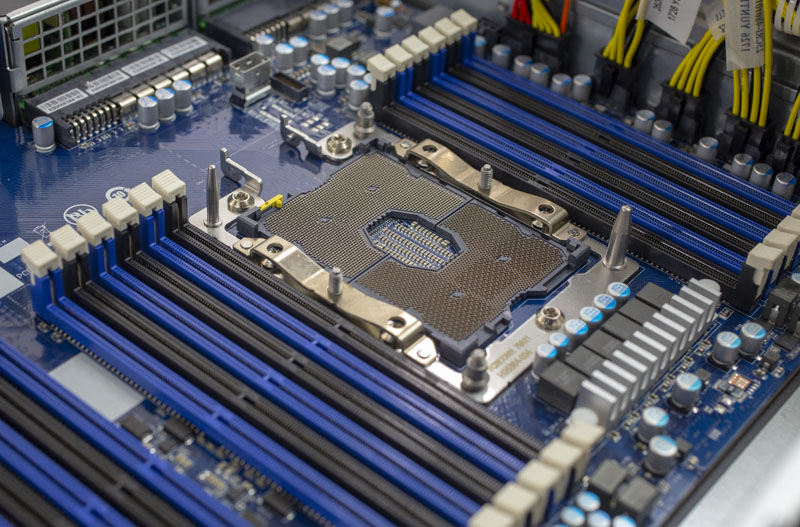
Each CPU socket is flanked by 12x DDR4 DIMM slots for a total of 24 DDR4 DIMMs per server. Here is a quick shot with DIMMs, CPUs, and heatsinks installed from our configuration process.
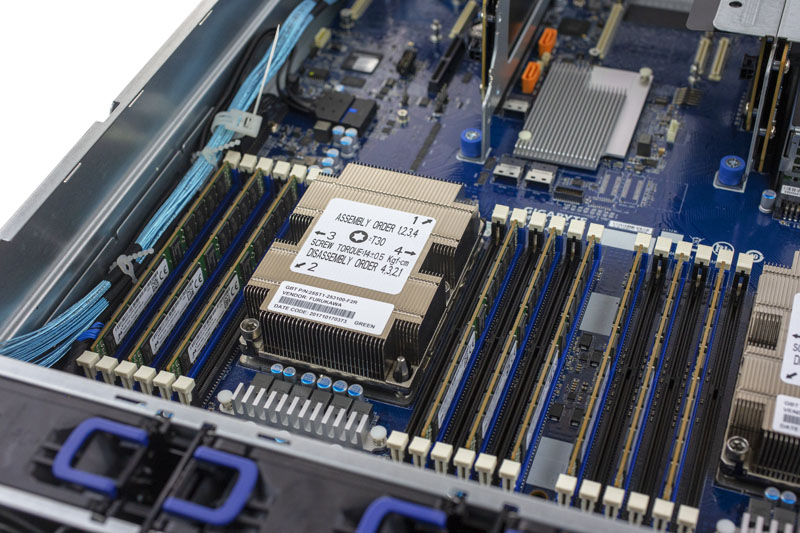
Storage is provided by an Intel Lewisburg PCH. There are features such as dual 7-pin SATA connectors that are able to power SATA DOMS as well as SATA III ports. We see most users looking for 24x front drive configurations using SAS controllers instead of SATA in this type of platform.
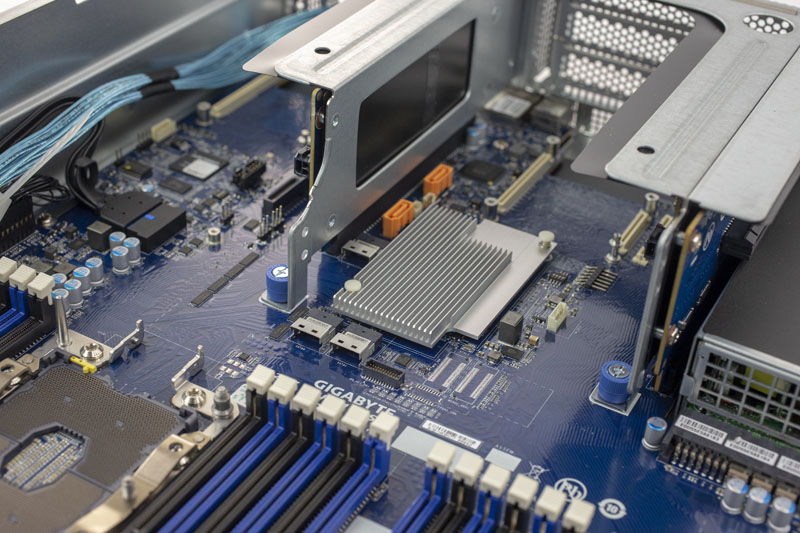
Integral to the Gigabyte R281-G30 design is a plethora of PCIe risers and OCP mezzanine slots. By utilizing PCIe risers and the custom form factor motherboard, Gigabyte is able to support up to three double width GPUs. The dual OCP PCIe 3.0 mezzanine networking slots allow for dual 100GbE adapters to be used even if the expansion risers are used for GPUs.
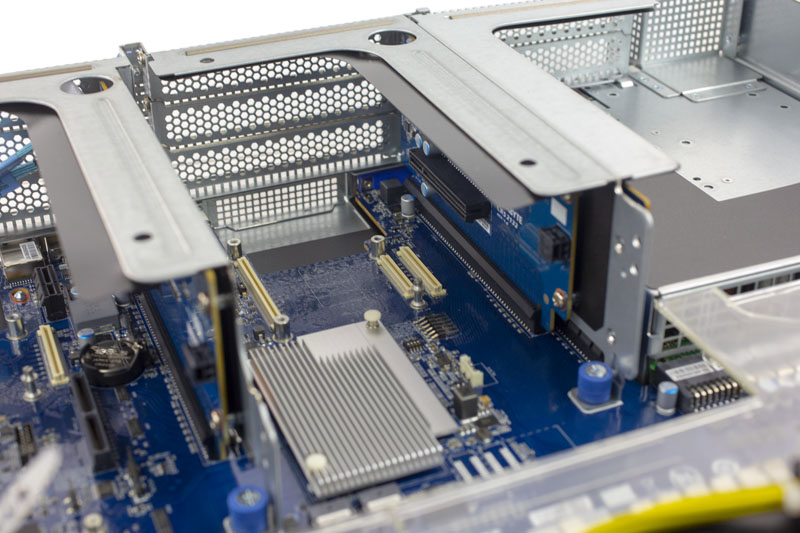
There are three riser cards installed. Each supports a PCIe 3.0 x16 slot that can bifurcate down to x8 and allow for the PCIe x8 slot on each riser to be used as well. The two main riser sections have an additional PCIe 3.0 x8 slot for additional expansion. Looking at the riser that can place a GPU above the PSUs, that riser only has room for the PCIe x16 /x8 combination.
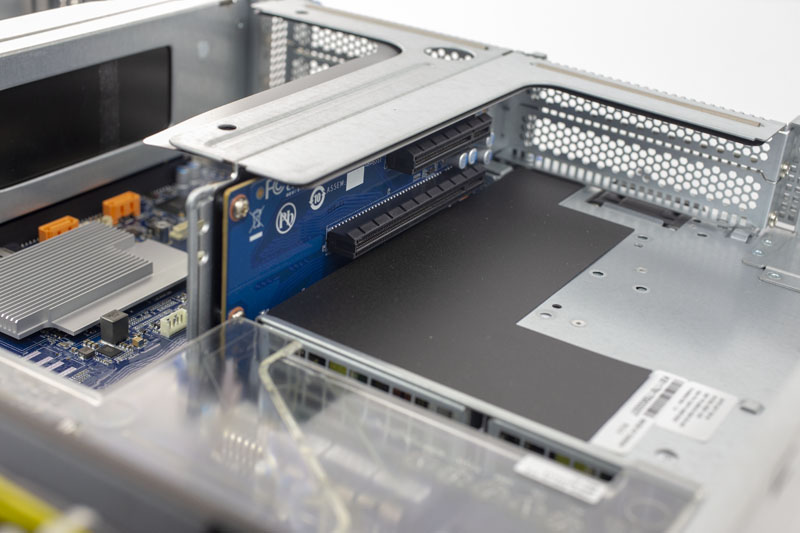
We wanted to note that the installation process getting access to the risers was generally easy, but there are a few screw locations that were at least slightly challenging to access. This photo is a good example where we were fortunate to have a screwdriver on hand that just barely fit.
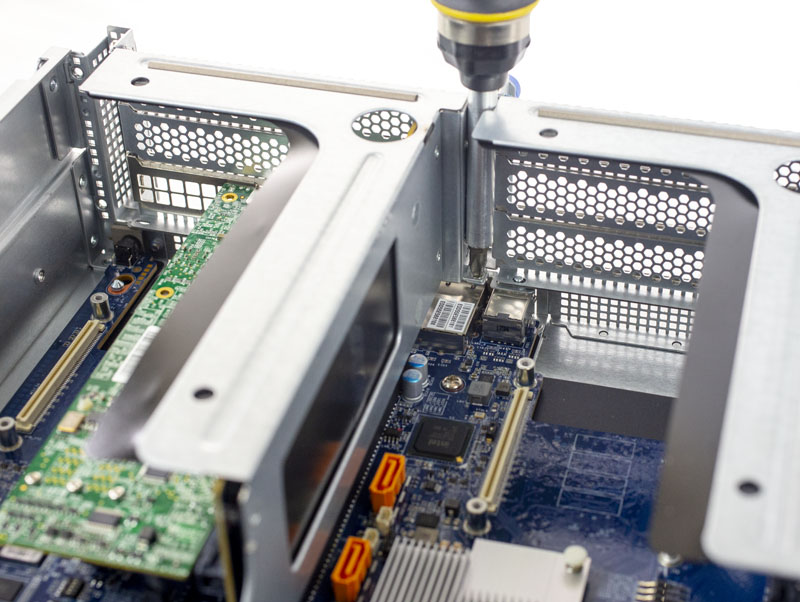
Another item we wanted to note in our overview is the air shroud itself. This piece is of significantly higher quality and structural integrity than some of Gigabyte’s previous generations and some of the company’s competitors offer. The air shroud even integrates GPU power connectors (Tesla/ GRID not GTX style in its default configuration) and tie-down points which makes cable routing and organization simple. Great job to the Gigabyte team here.
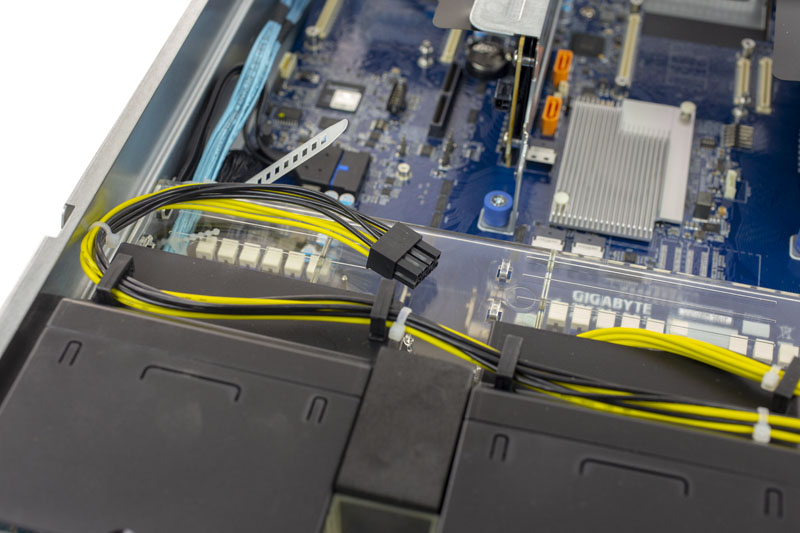
As a final server photo, we wanted to show off the fans. The fans are hot-swappable and have an interesting design with small handles to lift them out of their mounting points. Another great touch from the Gigabyte design team.
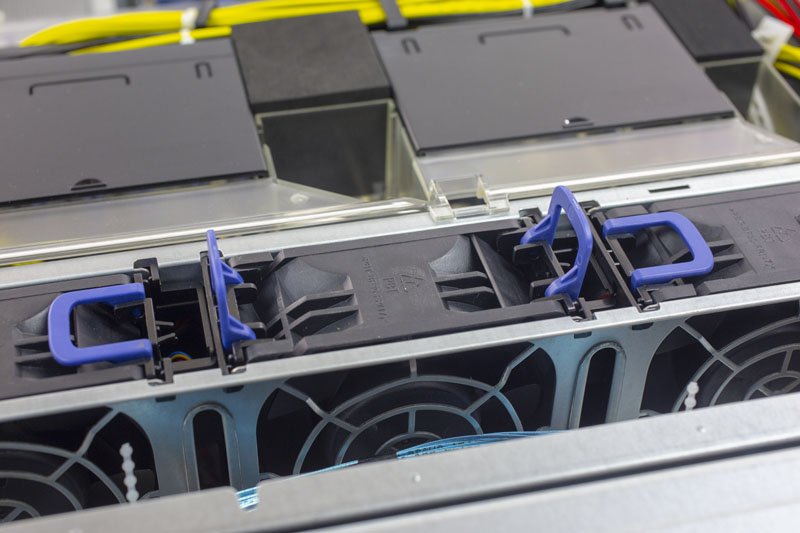
Next, we are going to look at the management of the server, which is extremely important in modern server designs. After the management, we are going to look at the performance. Finally, we are going to conclude with power consumption and our final thoughts.



